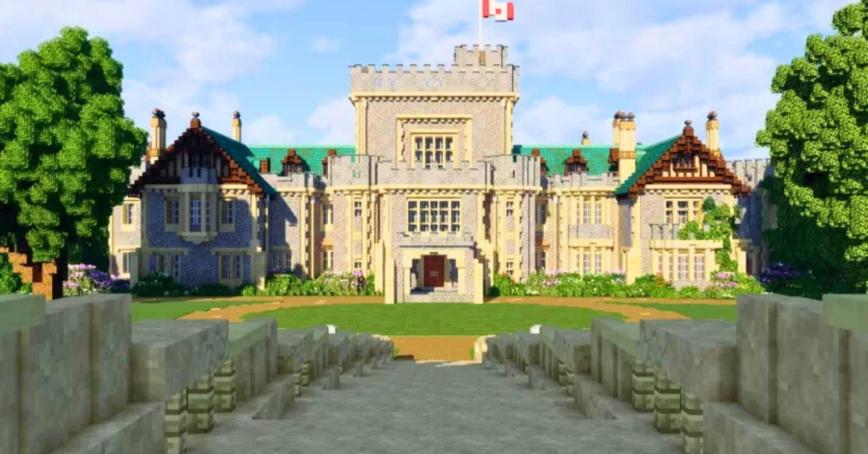Explore Royal Roads virtually in Minecraft


As the former archives manager of Royal Roads University, Jenny Seeman was responsible for preserving and managing the collective documentary heritage of the institution and the century-old estate on which it sits.
But even Seeman couldn't always predict how those aged documents, photographs, and maps would be used by people outside the university — from historians, authors, and artists to curious individuals with unique projects.
One fashion enthusiast, she once recalled, wanted to source photos to recreate Edwardian clothing. A music student searched the archives for unpublished musical scripts by Eleanor Dunsmuir, daughter of the estate's original owners. Someone else requested floor plans of Hatley Castle to use as the basis for a Dungeons & Dragons game.
Then there was Chris Tang.
Tang, a West Vancouver resident, contacted Seeman in search of original maps and plans for the estate so he could create a virtual version of Hatley Park for the hugely popular online game Minecraft. The game allowed players to take blocks, textures and environments and shape them to their own vision.
Instead of using the hammers, trowels, and stones of the early 1900s craftsmen who built the castle, Tang worked with a keyboard, mouse and pixels. He reimagined the Royal Roads grounds in his own way — removing some features and even moving the castle closer to Esquimalt Lagoon. And while he recreated Hatley Castle at a 1:1 scale in his virtual world, Tang made a few artistic tweaks, like enlarging the Norman tower at its centre to create a more visually striking structure.
Which begs the question: Why Royal Roads?

Tang enjoyed a love of revivalist architecture in Canada that predated his introduction to Minecraft as a teenager. As well, the RRU grounds made an impression on him when, as a kid, he attended a cousin's wedding there and recognized the castle from the X-Men movies.
He spent two months building his Hatley Park, a creation of his own doing supported by a small but enthusiastic community of Minecraft builders called WBC Builds.
Tang researched the relationship between humans and the microbial species that lived in and on them — and his gaming passion in his graduate studies. The limitations the game imposed on players forced them to be creative and to think outside the bounds of normal game play, he said, noting those qualities were also valuable in scientific research.

Seeman said of Tang's work: "I was struck by how pretty the renderings were, what a detailed recreation he'd done.
"This was a really good example of the marriage of arts and archives, creativity and bringing in historical records to create something new," she said, noting many people accessed Royal Roads' archival records through an online database.
"I was always really fascinated by the ways archives got used because my principal raison d'être was to make records available long-term and provide access to those records.
"As an archivist, you could never predict how records would be used in the future. And that was part of what I enjoyed so much about my job… seeing how people would reinterpret the records and give them new life and new meaning."